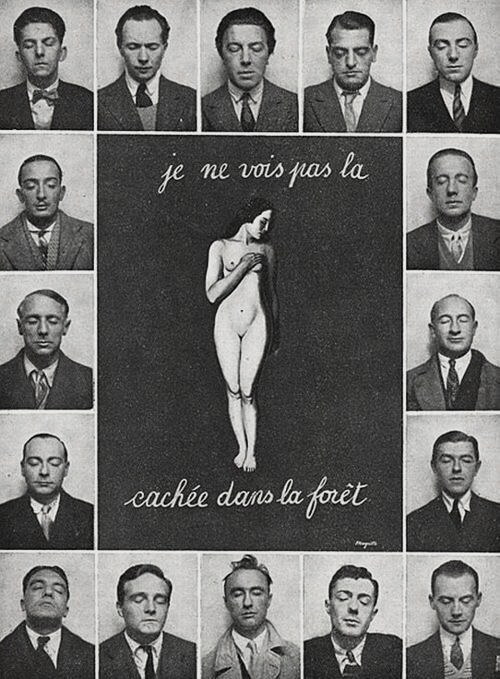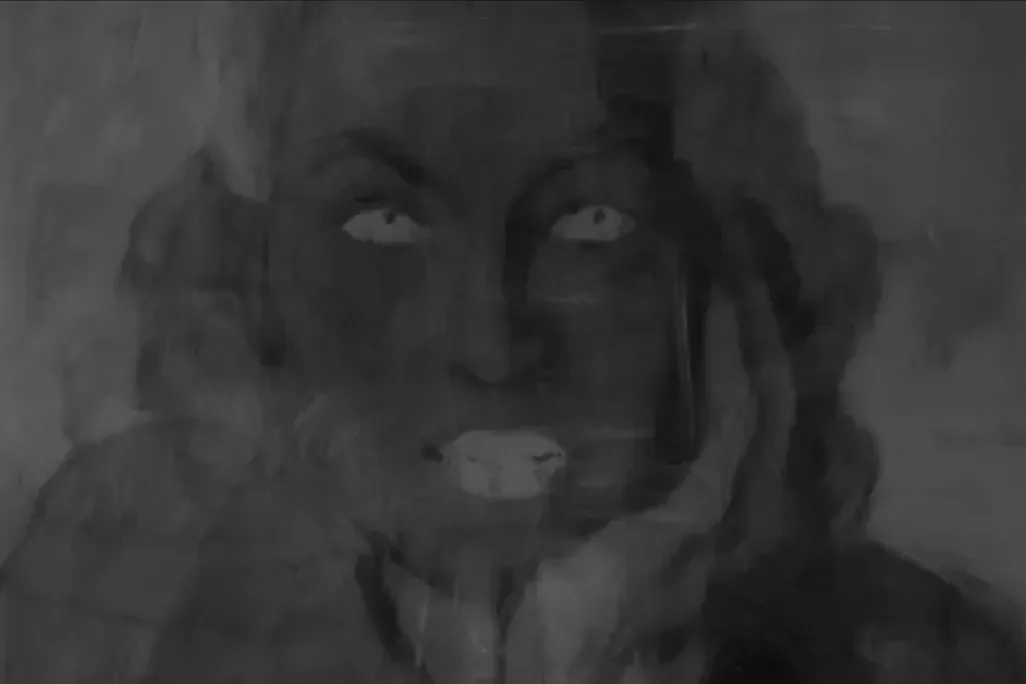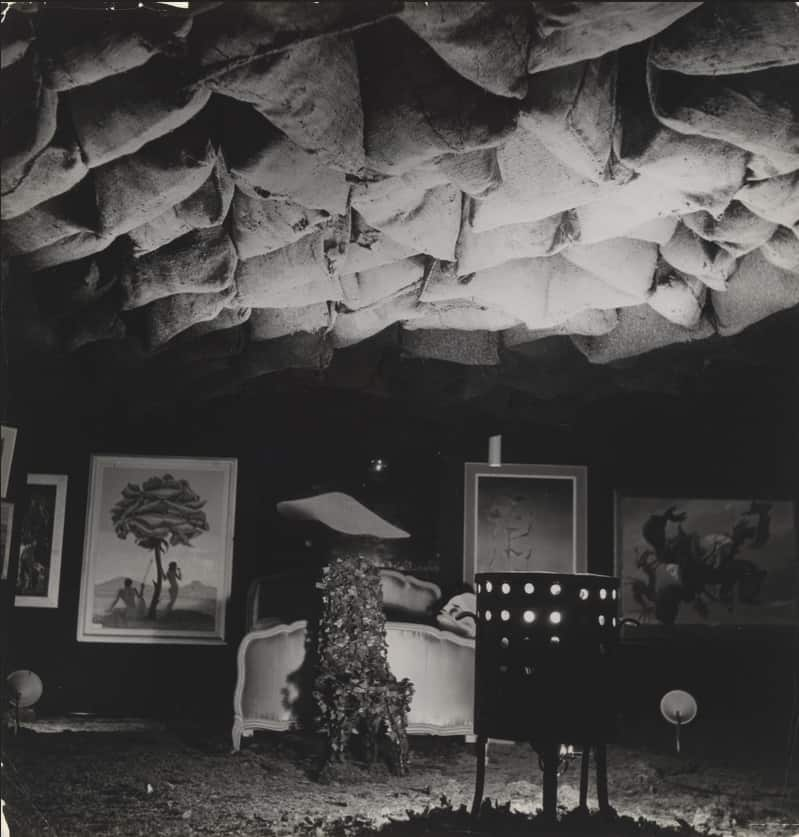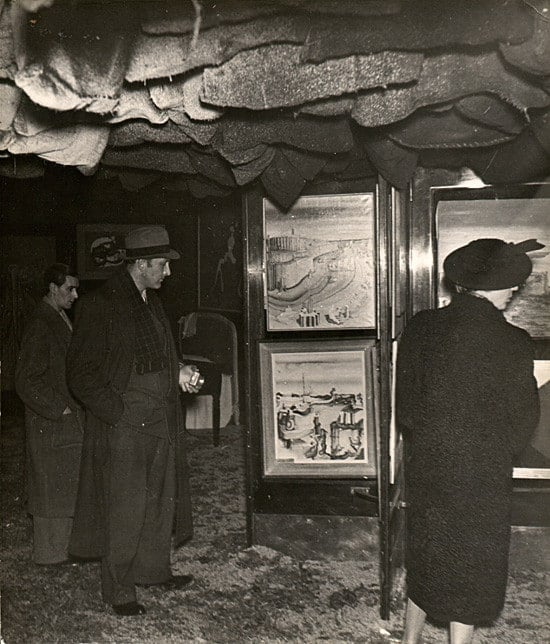created 2025-07-02, & modified, =this.modified
tags:y2025surrealismart
rel: Surrealism Clockwork Music by Arthur WJG Ord-Hume
An exhibition held from January 17th to February 24th in 1938 in Galérie Beaux-Arts, organized by Breton and Paul Éluard. The catalog listed Duchamp as generator and arbitrator, Dali and Ernst as technical advisers, Man Ray as light tech.
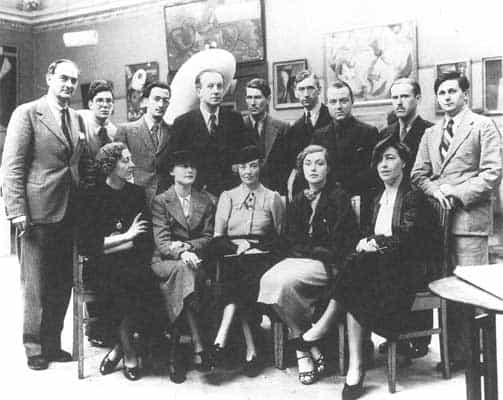
The exhibition was staged in three sections, showing paintings and objects as well as unusually decorated rooms and Mannequins which had been redesigned in various ways. With this holistic presentation of surrealist art work the movement wrote exhibition history.
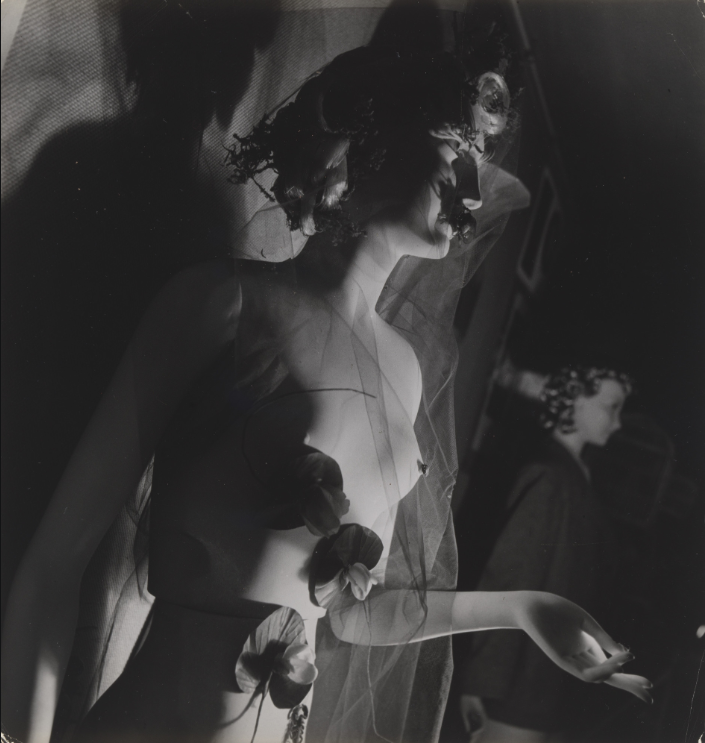 Evening dress was required and all manner of highlights had been promised: hysteria, a sky full of flying dogs and the presence of Enigmarelle, an humanoid automaton, a descendant of Frankenstein.
Evening dress was required and all manner of highlights had been promised: hysteria, a sky full of flying dogs and the presence of Enigmarelle, an humanoid automaton, a descendant of Frankenstein.
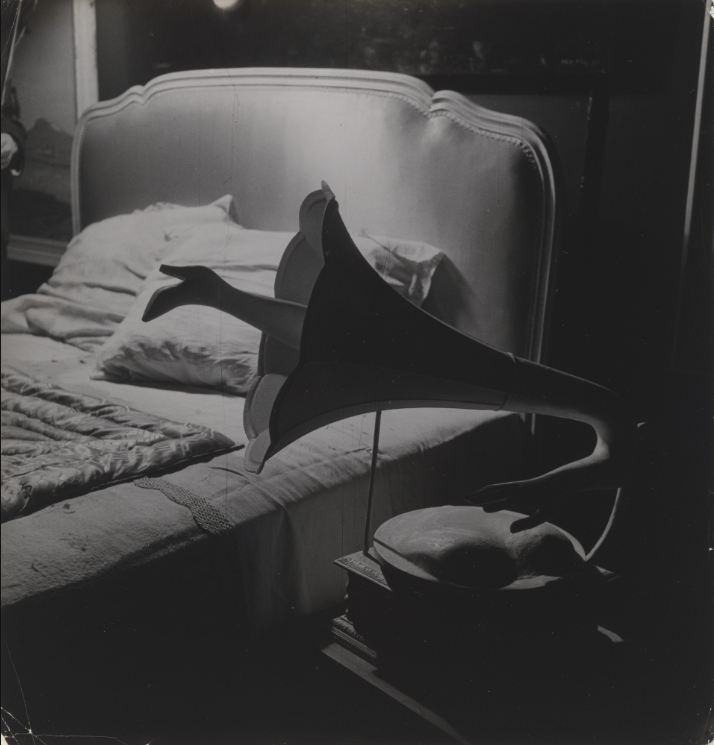
Exhibited
Magritte’s The Hidden Woman
”tree that hides the forest” rel: The Vanishing Lady
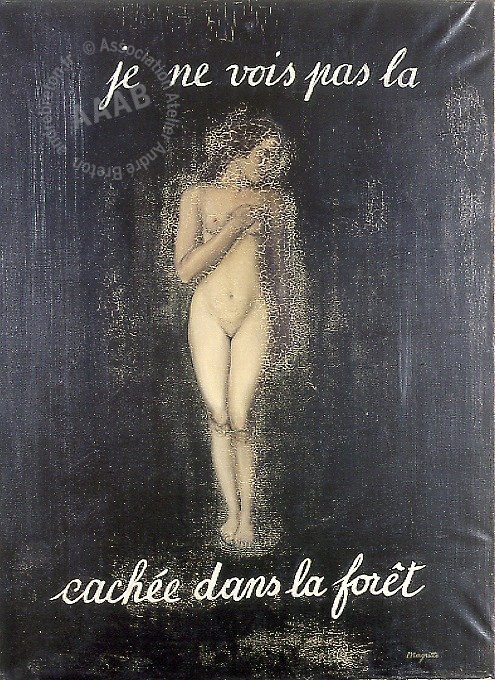
The title ‘I Do Not See the (Woman) Survey of Invisibility in the Forest’,
The male protagonists all have their eyes closed, alluding to the commonly held dream fantasy by men of the nude woman and the desire for her, albeit only as a photograph. Given the Surrealists’ proclivity for sexuality and wit the photograph has an ambiguity concerning what exactly is ‘hidden’ in the ‘forest’, Magritte often played with language in his paintings, juxtaposing text and images. In essence he was trying to demonstrate the incongruities and shortcomings of language when relating it to reality and experience
Georgette
Recently researchers have found a painting of Magritte’s wife Georgette hidden under his painting The Fifth Season (1943)
They believe other paintings may depict Georgette.
The bright red shade of the lips can be observed through the upper paint layer in the center of the composition
Mannequins
Mannequins of select Surrealists were on display. This one of Duchamp.
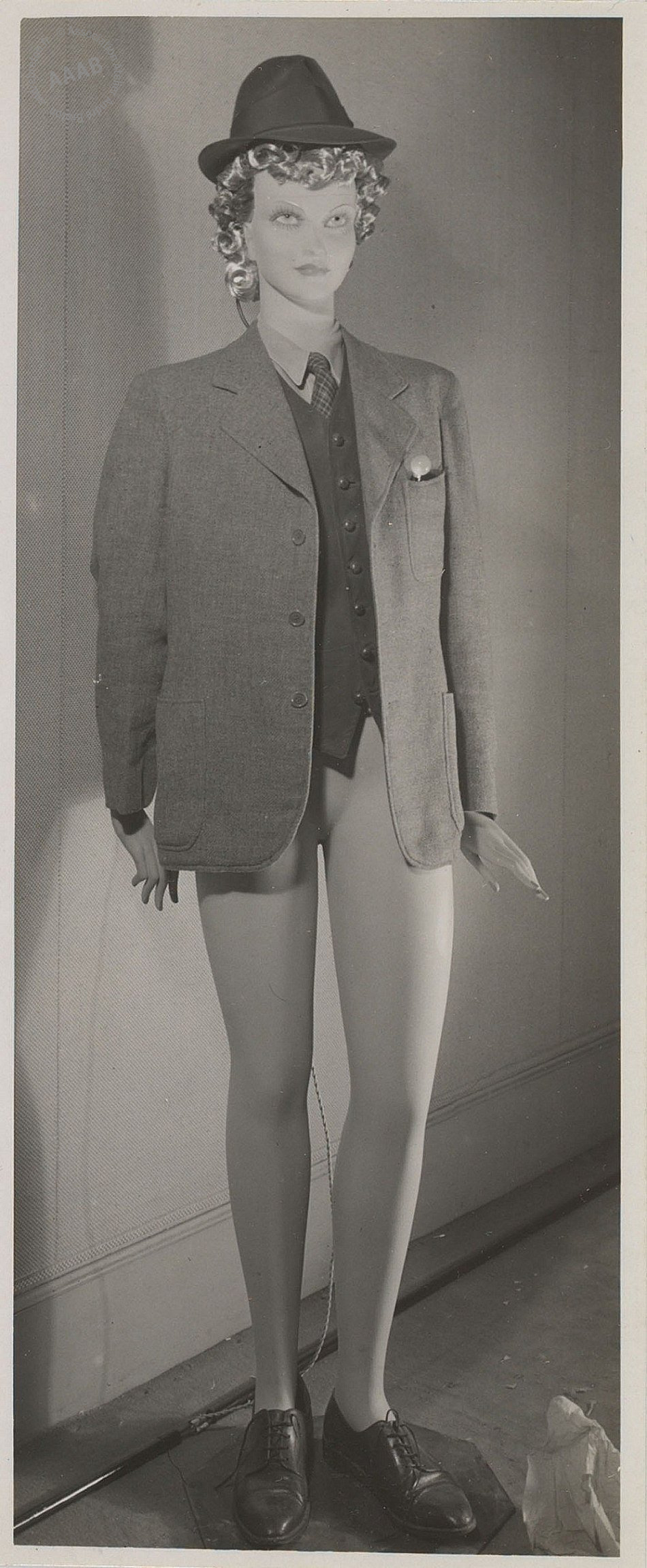
Nuage articulé
Articulated cloud by Wolfgang Paalen was hanging from the ceiling. It was an umbrella covered with natural sponges.
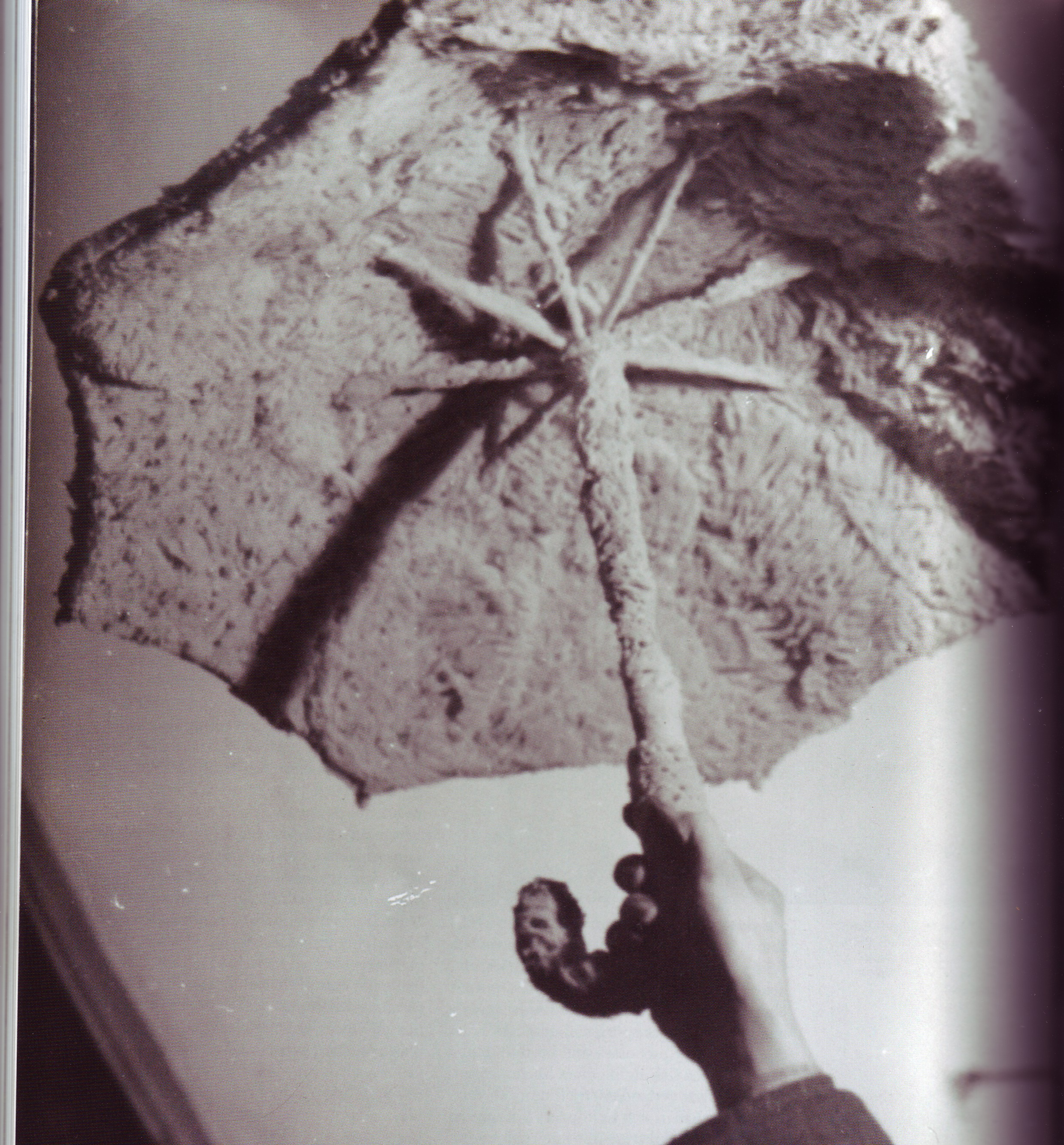
The Main Room
The corridor led to the main hall, a central space that resembled a grotto. The floor was covered in a carpet of sand and leaves, whereas 1200 coal bags hung from the ceiling – they were stuffed with newspapers but designed to leak coal dust on the visitors underneath. Four beds positioned in the corners explicitly invited to abandon reality and symbolically enter the space of dreams, while in the middle stood a lit iron brazier for visitors to huddle up around it like tunnellers of the unconscious. An actual pond, complete with water-lilies and reeds, was located a little further on.
As the exhibition was almost entirely plunged in darkness, the public was provided with flashlights; an expedient that enhanced the sense of disorientation and surprise. To further increase the immersive character of the environment, coffee was roasted to emanate “perfumes of Brazil”, and a soundtrack of cries and laughter was played through a loudspeaker along with a German military march.
